Unearthing Skara Brae: A Journey into Scotland’s 5,000-Year-Old Neolithic Village

Skara Brae is a remarkable stone-built Neolithic settlement located on the Bay of Skaill, on the west coast of Mainland, the largest island in the Orkney archipelago of Scotland. This ancient site, dating from roughly 3180 BC to 2500 BC, is Europe’s most complete Neolithic village. Known for its excellent preservation, Skara Brae offers a fascinating glimpse into prehistoric life, earning the nickname “Scottish Pompeii.” In 1999, it gained UNESCO World Heritage Site status as part of “The Heart of Neolithic Orkney.”
Discovery and Early Exploration
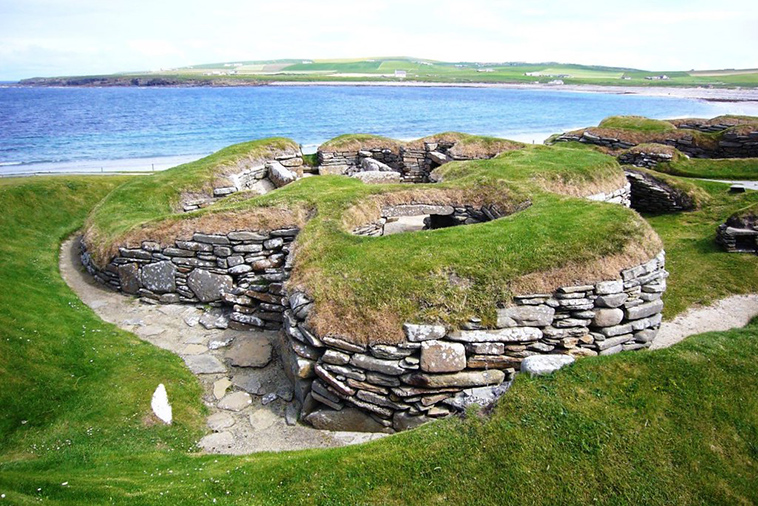
In the winter of 1850, a severe storm struck Scotland, causing widespread damage and uncovering Skara Brae from a large knoll. Local villagers discovered the outline of a village with several small, roofless houses. William Watt of Skaill, a self-taught geologist, began excavating the site but abandoned the work after uncovering four houses in 1868. The site remained undisturbed until 1913, when it was looted. In 1924, another storm damaged the site, prompting a proper investigation led by Professor V. Gordon Childe from the University of Edinburgh in 1927.
Neolithic Lifestyle
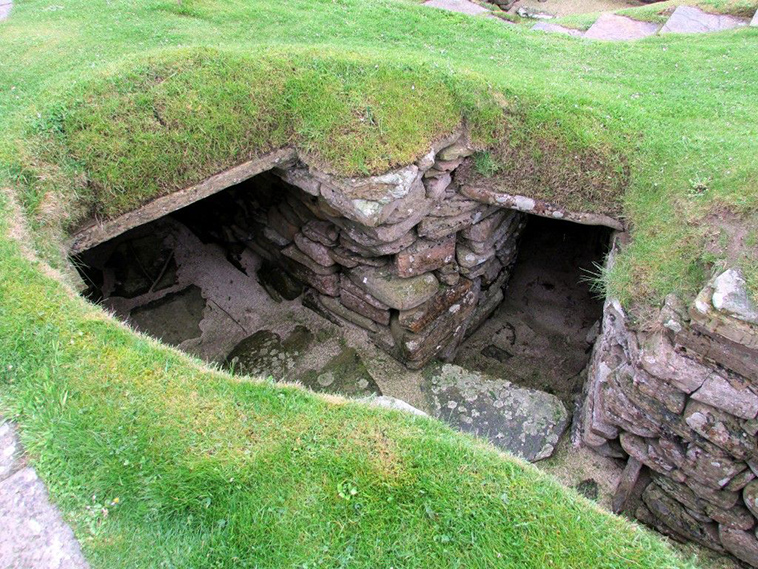
The inhabitants of Skara Brae lived in houses built with flagstones and supported by earthen dams. Each house had stone hearths, beds, cupboards, and a primitive sewer system with toilets and drains. The dwellings, measuring about 40 square meters each, were insulated with midden and featured stone-built furniture. The village housed no more than fifty people at any given time.
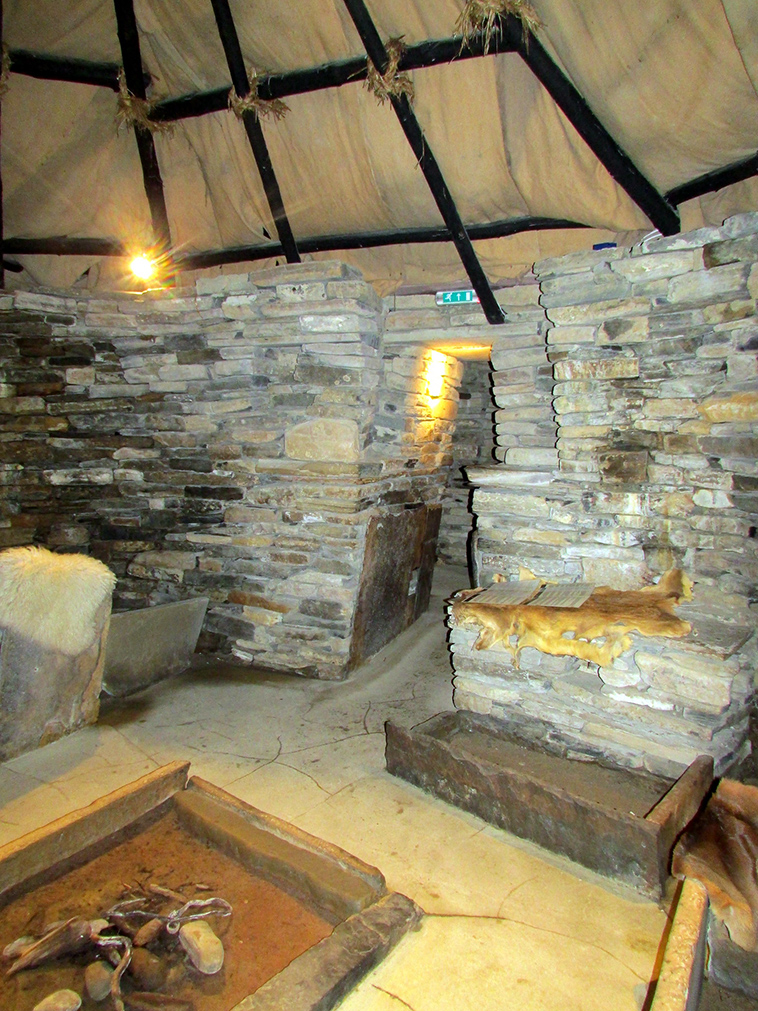
The Grooved Ware people, who built Skara Brae, were primarily pastoralists, raising cattle, pigs, and sheep. They also cultivated barley and consumed seafood, as evidenced by the fish bones and shells found in the middens. The houses contained waterproof stone boxes for storing fish bait, likely limpets. The discovery of beads, paint pots, and the layout of the homes suggest a division of labor and social structure within the community.
Evidence of Home Furnishings

Each house in Skara Brae had similar furnishings, with beds, dressers, and stone-built pieces such as cupboards and seats. The dresser, located opposite the entrance, was the first thing seen upon entering. The larger bed on the right side of the doorway likely belonged to the husband, while the smaller one on the left was the wife’s, as supported by the discovery of beads and paint pots in the smaller beds.
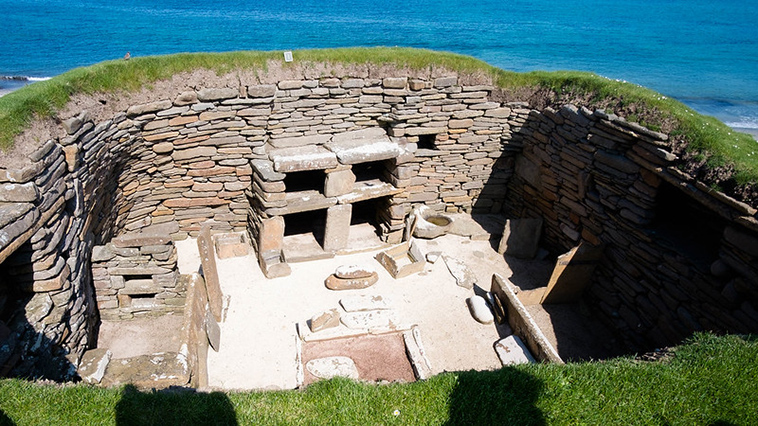
House 8 stood out for its unique features. It lacked storage boxes and a dresser, had small cubicles, and contained tools made from stone, bone, and antler, suggesting it was used for toolmaking. It also had a flue and heat-damaged volcanic rocks, indicating it may have been a workshop. Unlike other houses, House 8 was above ground, with thick walls and a protective porch.
Dating and Abandonment
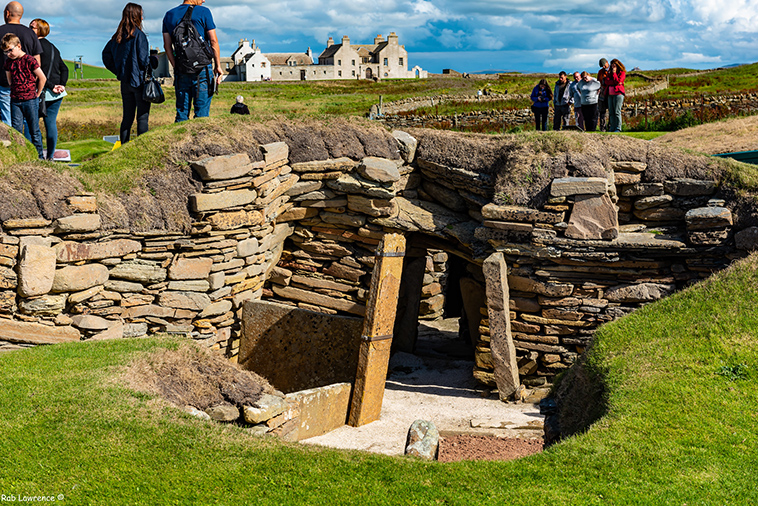
Initial estimates by Childe dated the settlement to around 500 BC, but later excavations in the early 1970s determined that Skara Brae was occupied from about 3180 BC to 2500 BC. The climate change around 2500 BC, which became colder and wetter, may have led to the abandonment of the village. Some theories suggest a catastrophic storm forced the inhabitants to leave suddenly, leaving behind prized possessions. However, Anna Ritchie argues that the abandonment was gradual, with the site being buried by sand over time.

Conclusion
Skara Brae remains one of the most significant archaeological sites in Europe, offering valuable insights into Neolithic life. Managed by Historic Environment Scotland, along with partners like Orkney Islands Council and NatureScot, the site continues to attract visitors year-round. Despite the threats posed by climate change, Skara Brae’s legacy endures, reminding us of the resilience and ingenuity of its ancient inhabitants.
Video
News
The Hanging Temple: China’s 1,500-Year-Old Cliffside Marvel of Faith and Engineering
The Hanging Temple: China’s 1,500-Year-Old Cliffside Marvel of Faith and Engineering Perched precariously on the cliffs of Mount Heng in Shanxi Province, China, the Hanging Temple, also known as Xuankong Temple, Hengshan Hanging Temple, or Hanging Monastery, is an architectural…
The Willendorf Venus: A 30,000-Year-Old Masterpiece Reveals Astonishing Secrets
The Willendorf Venus: A 30,000-Year-Old Masterpiece Reveals Astonishing Secrets The “Willendorf Venus” stands as one of the most revered archaeological treasures from the Upper Paleolithic era. Discovered in 1908 by scientist Johann Veran near Willendorf, Austria, this small yet profound…
Unveiling the Maya: Hallucinogens and Rituals Beneath the Yucatán Ball Courts
Unveiling the Maya: Hallucinogens and Rituals Beneath the Yucatán Ball Courts New archaeological research has uncovered intriguing insights into the ritual practices of the ancient Maya civilization. The focus of this study is a ceremonial offering found beneath the sediment…
Uncovering the Oldest Agricultural Machine: The Threshing Sledge’s Neolithic Origins
Uncovering the Oldest Agricultural Machine: The Threshing Sledge’s Neolithic Origins The history of agricultural innovation is a fascinating journey that spans thousands of years, and one of the earliest known agricultural machines is the threshing sledge. Recently, a groundbreaking study…
Nara’s Ancient Sword: A 1,600-Year-Old Protector Against Evil Spirits
Nara’s Ancient Sword: A 1,600-Year-Old Protector Against Evil Spirits In a remarkable discovery that has captured the attention of archaeologists and historians alike, a 7.5-foot-long iron sword was unearthed from a 1,600-year-old burial mound in Nara, Japan. This oversized weapon,…
The Inflatable Plane, Dropped Behind the Lines for Downed Pilots
Experimental The Inflatable Plane, Dropped Behind the Lines for Downed Pilots The Inflatoplane from Goodyear was an unconventional aircraft developed by the Goodyear Aircraft Company, a branch of the renowned Goodyear Tire and Rubber Company, also famed for the Goodyear…
End of content
No more pages to load











